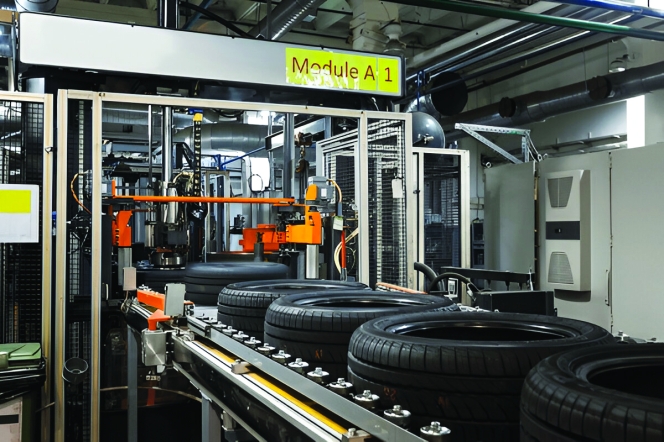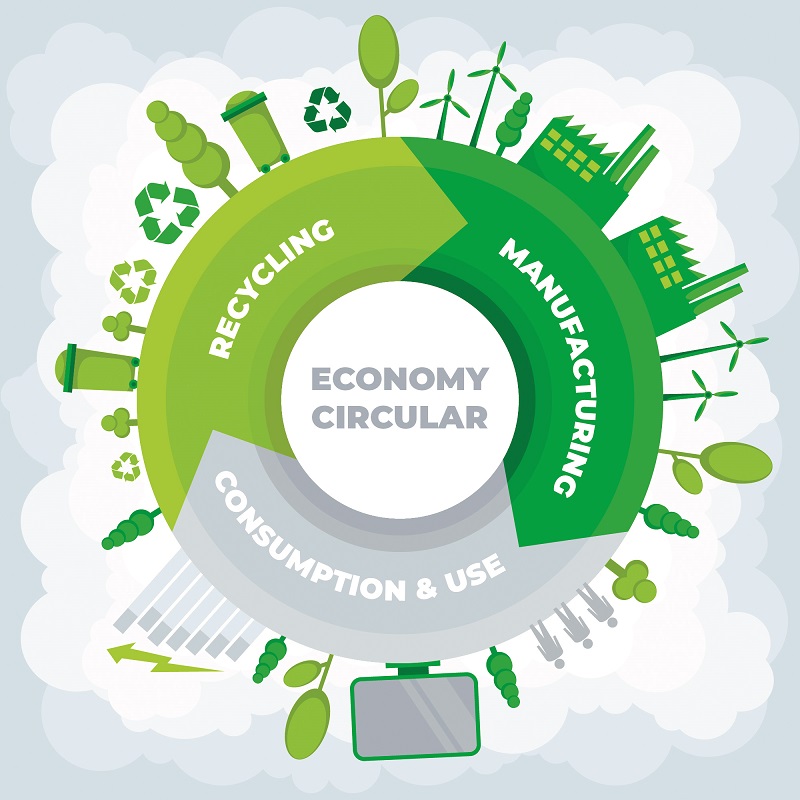
OTR tyres, rugged design and advanced technology that withstand the most demanding conditions... From mining to construction, these giant tyres play a critical role in keeping industries running smoothly.
What does the term ‘off-road tyre’ mean to us? Giant, robust, special and imposing – a tyre for heavy-duty vehicles. While there are already some tracked loaders and cranes on the market, stationary work, excavation, loading and transport are carried out with mobile machinery in open-pit mines or on heavy-duty construction sites. Transport vehicles, cranes and large-capacity loaders are always equipped with robust and durable rubber tyres. The last 50 years have seen a true revolution in the off-road tyre segment, as tyres have become larger every decade. Newer dump trucks have higher load capacities, requiring the installation of larger tyres to meet this growing demand.
Today 3,500-plus hp engine big haulers loaded carriage capacity reaches to 400-plus tonnes equipped with a tyre such as 59/80R63 extra load size. Such trucks are coupled with loaders having a shovel capacity of 60 tonnes on open pit areas. These load capacities are enormous, and the new generation of trucks offers even more. Tyre sizes up to 63/80R63 or some other size combination with low platform and wider dimensions are in the market.
Thirty to 40 years ago, tyre sizes for 50-80-tonne haulers were around 36.00-51 or smaller. Today, we are talking truck carriage capacities of 450-500 tonnes with hybrid engines. More efficient AC electrical drive haulers and having tyre sizes up to 70-inch rim size tyre are on the pipeline. These vehicles will be able to accommodate tyres with a diameter of over four metres, a weight of over 5.5 tonnes and a load capacity of over 120 tonnes per tyre.
High-tensile reinforcement materials and new generation rubber compound technologies play an important role in these revolutionary developments.
Extreme conditions, extreme performance, heat and puncture resistance for uninterrupted operation... This is how OTR tyres master harsh environments (quarries, mines, construction sites).
Tyres for open-pit mining, underground mining and construction remain separate categories. Their dimensions and basic requirements also vary. However, load capacities and the number of autonomous structures with electric motors and ultra-wide tyres are steadily increasing. The use of advanced materials in self-monitoring tyres with integrated pressure and wear sensors will become more widespread. Giant radial tyres for electric vehicles will proliferate on the market.
Tyre demands for extreme load-bearing capacity, improved cut and tear resistance (against sharp, abrasive stones) and improved heat dissipation through deep tread patterns will increasingly prevail, in line with customer demands. While the tread depth of off-road tyres was only 50 to 60 mm in the 1970s, today’s deep-tread off-road tyres reach 100 to 110 mm. Radial construction with new compound and heat dissipation technologies enables off-road tyres with deeper tread patterns, which also represents a significant advantage for the circular economy. Low-temperature off-road tyres also offer higher and multiple retreadability.
Both bias-ply and radial off-road tyres face significant challenges such as heat, abrasion, traction, sidewall cuts and fire protection. Although current off-road tyre technology has advanced significantly compared to earlier radial off-road tyres, some brands use bias-ply reinforcement layers, primarily on the sidewalls or tread, for improved cut resistance. Bias-ply off-road tyres remain preferred for certain applications, particularly forestry and some mining tyres.
Titan International (USA) underscores its strong presence in the truck tyre market with its Mining & Construction Bias division. This underscores the strategic priority of these specific applications in the OTR tyre market. In the US, Titan focuses on cut-resistant compounds and special tread patterns for rock environments that perfectly meet the most stringent performance requirements of bias construction.

Michelin, Bridgestone and Goodyear dominate the OTR tyre market, with demand varying regionally. Large tyres for mining, underground mining and construction require durability, heat resistance and smart technology to meet the changing needs of the industry.
Michelin, Bridgestone and Goodyear dominate the global OTR tyre market, but Continental and BKT are also important players. Titan, Yokohama, the Chinese company ZC Rubber and the Indian company Apollo are other niche players that could disrupt global markets with more affordable alternatives. Furthermore, regional demand varies considerably between Asia, North America and Europe due to different mining, construction and regulatory environments. This benefits the different brands, whose combined commercial and technological strengths differ.
Michelin, Bridgestone and Titan (North America and Australia) produce giant mining tyres up to 63 inches wide. BKT, Apollo and ZC Rubber produce low-cost mining tyres in Africa, Latin America and India. Michelin and Bridgestone generally offer smart, autonomous tyres in North America and Europe. Yokohama and Continental (Japan and Scandinavia) offer underground and speciality tyres.
For open-pit mining, powerful electric-powered dump trucks and wheel loaders will offer exceptional load-bearing capacity (over 100 tonnes per tyre). They feature cut and chip resistance (against sharp, abrasive rocks), heat dissipation and a deep tread pattern, which will become increasingly popular.
Underground mining vehicles with narrow low-profile tyres and dump trucks (LHD), on the other hand, will be equipped with compact, fire-resistant low-profile tyres. Their low flammability, puncture resistance and high manoeuvrability will also be important criteria.
Large Scale Construction vehicles like massive dozers, graders, dumpers, articulated dump trucks and motor graders will need high traction tyres for both mud and loose surfaces with reinforced sidewalls to avoid cuts and having high longevity (mixed on road/off road use).
OTR tyre manufacturers compete on durability, profitability and performance. Their primary challenges are extending tyre life, optimising fuel efficiency and reducing wear.
All of the major OTR tyre manufactures need to compete in this high demanding segment of the tyre industry. The biggest challenge in every segment is achieving a long service life without tyre failure. Improved traction and rolling resistance, as well as reduced maintenance requirements, are real advantages.
The cost of a set of tyres is always divided by the total number of labour hours to determine the unit cost per tyre hour. Various parameters influence tyre and other operating costs. To minimise fuel and tyre costs in mines, better road maintenance, operator training in environmentally friendly driving (acceleration/braking), monitoring tyre pressure and loading and the use of predictive analytics (telematics to measure fuel consumption and tyre wear) are essential.
Overloading increases tyre stress, accelerating wear and fuel consumption. Poor road conditions with potholes and spills lead to more cuts and flat tyres, increased rolling resistance and higher fuel consumption. Harsh acceleration or braking always leads to overheating and faster wear. Although large radial-body trucks cost nearly USD 100,000, every preventative measure and maintenance is essential for business reasons.
Innovations such as RFID, flame-retardant compounds and environmentally friendly materials are driving the industry forward. OTR tyre manufacturers compete with specialised designs: mining tyres must be cut-resistant, earthmoving equipment must be durable and port tyres focus on efficiency.
Tyre manufacturers must survive in this highly competitive and demanding industry. Mining tyres are exposed to extreme conditions and require cut resistance thanks to highly abrasion-resistant compounds and additional steel belt layers. Earthmoving tyres require flexibility and durability thanks to all-season tread compounds and rock-resistant designs. Port logistics tyres feature low rolling resistance and chemical resistance thanks to lightweight steel belts. RFID tracking offers real advantages for tyre tracking.
Innovations for niche applications are also essential for brand building and address specific challenges. Some underground mining tyres feature non-marking and flame-retardant compounds for enhanced safety and performance. Arctic tyres require low-glass transition temperature polymers and microspike technology for better traction in extreme cold. As always, off-road electric tyres require improved efficiency and lower noise levels.
The use of recycled materials poses a real challenge for this segment, but more durable designs certainly reduce waste and replacement frequency. However, bio-based compounds and recycled rubber must be more widely integrated into new products.
Key trends in the OTR tyre segment include intelligent monitoring systems, environmentally friendly compounds and improved reinforcement techniques. Graphene-reinforced tyres promise extremely high strength and heat resistance. Sustainability will be a priority in OTR tyre manufacturing, with a focus on reducing environmental impact through innovative materials and designs.














Comments (0)
ADD COMMENT